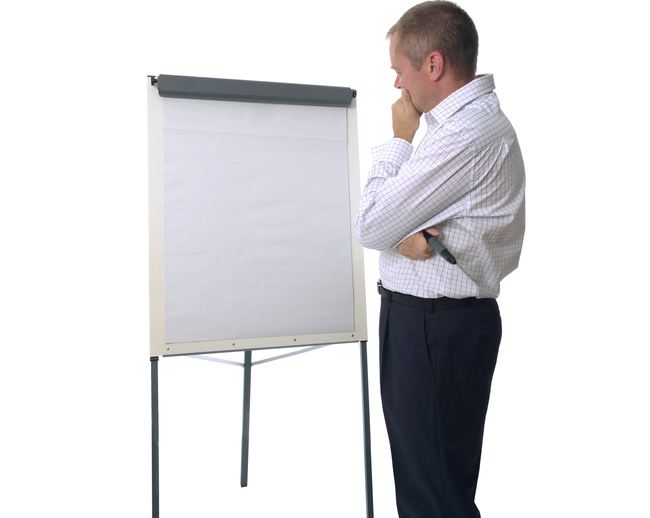The chances are you have sat in a meeting room, stared at a flip chart that has some scribble on it, and wondered what demented mind could have produced such scrawl.
That’s because most people who write on flip charts have no idea how to get the best out of them.
The flip chart is the most commonly used audio-visual aid in business, yet it is the only one that people think they don’t need to be taught how to use.
The amazing scribble we see every day on flip charts is testimony to the fact that there is a clear lack of understanding on how to get the best out of them.
AIM FOR CLARITY
For most meetings, the only audio-visual aid is a flip chart. Hence if you can use one well you will be getting your points across better and be more persuasive and influential. To achieve this, what you put on the flip chart needs to clear.
This means planning in advance what will appear and how much space you will allocate. If possible draw up your flip chart in advance in light pencil – you’ll be able to see your guide marks, but others in the room won’t.
Indeed, if you draw diagrams, charts, tables, and so on in advance in light pencil your finished drawings as you go over them with the marker pen will astound your audience!
GO LARGE
People often write their flip chart tests in letters that cannot be read by anyone else in the room; the letters are fine close up to the chart, but a few feet away is meaningless.
To be sure that your flip chart text can be read by everyone in the room aim for letters that are at least three inches tall.
Also, do not write in capitals, they are difficult to read. Instead, print in lower case, no-joined up writing.
Also, avoid underlining text as this makes it difficult to read. If you need to emphasize particular words then you should use a different color.
PREPARE, PREPARE, PREPARE
If you want to be really impressive, you should write up and draw your flip chart pages in advance. Use plenty of colors and separate each of your pre-prepared pages with some blank sheets.
That way you can make notes as your meeting progresses, then turn to your next pre-prepared page for discussions.
Whatever you do, though, when you write on your flip chart you should stand to one side and face the meeting room as soon as you have finished.
That way you talk to the people in the meeting – not the flip chart. Plus your colleagues can read what you have written.
All too often people in meetings stand in front of the flip chart and talk to it, rather than communicating with the people attending the meeting.

